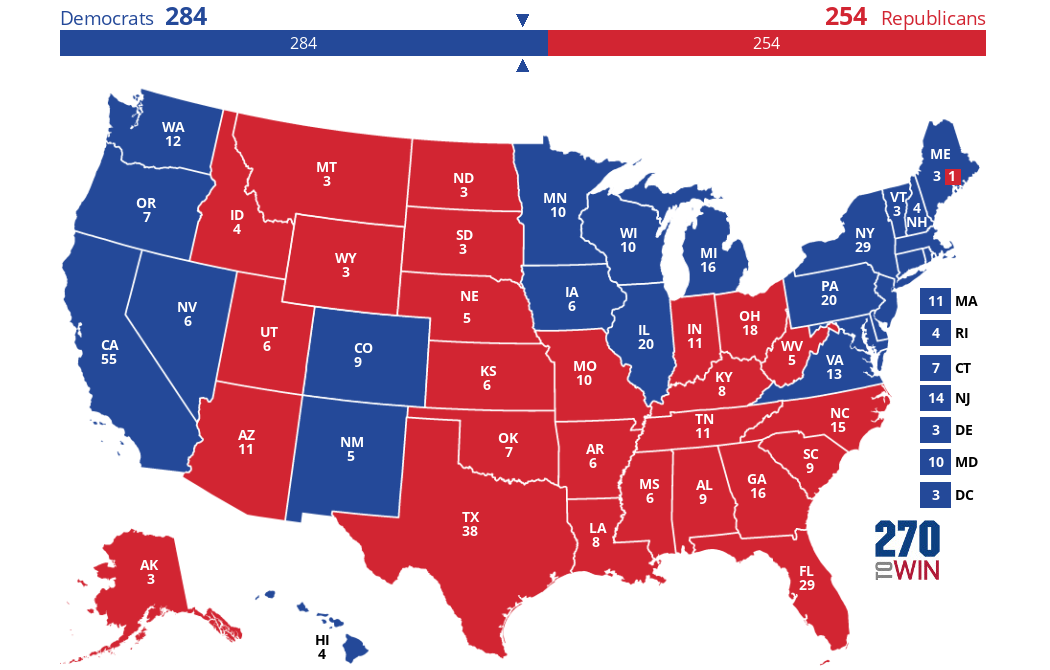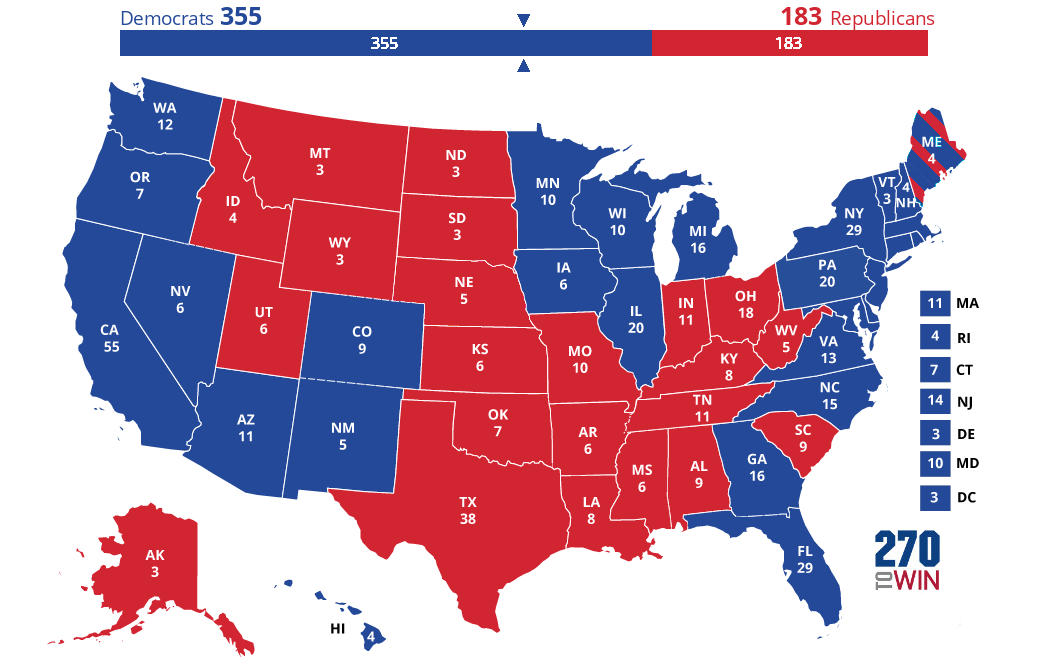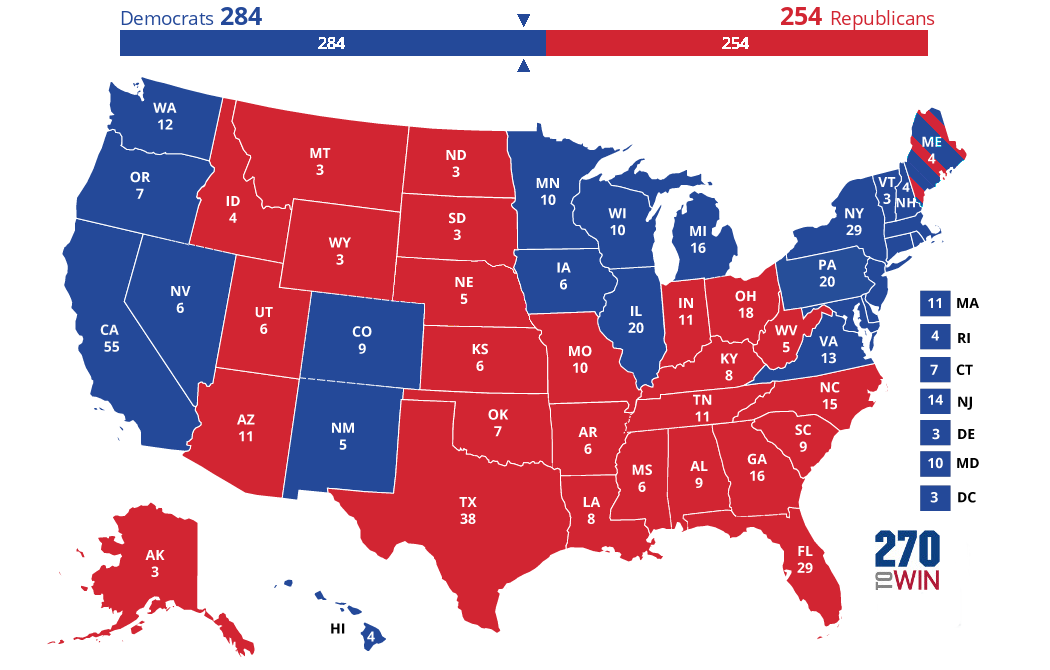When the history of the 2020 presidential campaign is written, the Coronavirus pandemic will no doubt play a prominent role. President Trump has not yet lost the election, but if he does, the pandemic and his reaction to it will take a lot of the blame.
Much of the discussion about Donald Trump’s handling of the pandemic focuses on the early months. Yes, the president restricted travel from China, but the policy had gaps and there were many missed opportunities as well. After the sort-of travel ban was imposed, the Trump Administration seemed to do little for the next two months until mid-March when the president shifted abruptly from “all is well” to a national emergency (this one far more justified than his national emergency on the Southern border). In September, Bob Woodward showed us that Trump had been aware of the Coronavirus threat all along but had been “playing it down.”
At the same time that Trump was downplaying the viral threat, his Administration was apparently ignoring the federal playbook for pandemics. The errors included not placing orders for emergency medical equipment until the middle of March despite having known since January that the Coronavirus was a deadly threat to Americans.
For the first few months, President Trump was the face of the White House Coronavirus Task Force. Rather than boosting the president’s favorability, the face time with American audiences led to a decline in Trump’s approval rating. One of the most memorable moments from the daily press briefings was Mr. Trump riffing on the possibility of injecting disinfectants to combat the virus.
At a time when Americans needed to trust the president for life-and-death advice, Mr. Trump was a veritable fountain of misinformation. The president had a long and committed love affair with hydroxychloroquine. Even after it became apparent that the drug was ineffective against COVID-19, the benefits of hydroxychloroquine were an article of faith for Trump supporters. Likewise, the president told us that the virus could go away in the summer (spoiler alert: it did not), that it was like the flu (it is not), that children cannot catch the Coronavirus (they can), and that the virus would magically disappear (it has not done so yet).
Of all the former Trump staffers who have warned against re-electing the president, Olivia Troye is one of the most damning. The former aide to Vice President Pence and member of the Coronavirus Task Force said in a Twitter video, “It was shocking to see the president saying that the virus was a hoax, saying everything was okay when we know that it’s not.”
“The truth is that he doesn’t actually care about anyone else but himself,” she added.
Now, some of the Trump strategy is explained by a new recording from Bob Woodward in which Jared Kushner said last April that Donald Trump was taking control back from “the doctors.”
“We’ve now put out rules to get back to work,” Kushner said. “Trump’s now back in charge. It’s not the doctors. They’ve kind of – we have, like, a negotiated settlement.”
So now there is evidence of what many of us have said all along. President Trump was substituting his own “very, very large brain” for the medical expertise of America’s best doctors. The result was not only that the United States became one of the worst-hit countries of the pandemic, but the looming disaster was so transparent that Trump’s poll numbers were impacted very early on.
As far back as April, older voters, a core Republican constituency and the highest-risk group for the virus, were deserting President Trump in droves. A variety of polls from the swing states showed Trump’s support among seniors collapsing and the pandemic was undoubtedly a major reason why. The trend apparently started before the Coronavirus hit the US, but the pandemic accelerated the movement away from Trump.
The pandemic also erased much of Trump’s advantage on his signature issue: The economy. Fox News polling from the swing states in September found Biden and Trump almost equal on the economy while voters strongly preferred Biden to handle the pandemic. In truth, the president’s trade war pushed the economy into a recession in February, a month prior to the widespread outbreak of the virus in the US, but the economy would be much stronger without the added impact of the virus.
Mr. Trump’s reticence about masks and social distancing ultimately led to an outbreak in the White House that extended to his own family. In all, at least 36 people were infected in the White House outbreak. No deaths have been linked to the outbreak, but several, including the president, were hospitalized. Chris Christie spent seven days in intensive care.
Even contracting the disease himself, President Trump has not learned to take the pandemic seriously. The White House resisted contact tracing to limit the spread of the outbreak and on Sunday Chief of Staff Mark Meadows said on CNN’s “State of the Union” that the Trump Administration had essentially given up on containing the virus and was going to concentrate on treatment at virtually the same time that the White House claimed that “ending the COVID-19 pandemic” was one of President Trump’s major first-term accomplishments. After being exposed to the virus by his chief of staff, Vice President Pence continued jetting around the country and making campaign stops rather than submitting to quarantine.
The mixed messaging comes as COVID-19 cases are spiking once again just prior to the election. New cases have surpassed the records set last summer. Even as the president says that the country is “rounding the turn,” the virus is spreading faster than ever before. The prospect of a long, deadly surge this winter and its associated effect on the economy seems to have ended the optimistic summer stock market rally.
Which brings us to what may be the final nail in the coffin of the Trump campaign. Last March, Congress passed and President Trump signed the CARES Act. The bill provided one-time checks to Americans and six months of relief for qualified American companies. Those programs expired in September.
After spending like drunken sailors (sometimes without congressional authorization) for four years, Republicans and the Trump Administration suddenly rediscovered fiscal conservatism when it came time to pass another pandemic relief package. Although talks with congressional Democrats have continued sporadically since July, the Senate has now adjourned until Nov. 9, ensuring that no relief bill will pass before the election. The failure to reach an agreement means that thousands of American businesses are at risk of failure and tens -if not hundreds- of thousands of American workers may lose their jobs. Right before an election.
There are many reasons that Americans are not voting for Donald Trump. The president has never been popular outside his own party. Rasmussen, a Trump-friendly pollster, found in September 2019 that 52 percent planned to vote against Trump. Still, the Trump Administration’s many failures in response to the pandemic did not win over many voters, if any.
The election is not over yet. Donald Trump may ultimately squeak out a victory and stay in office for another four years. If he does manage another fluke, it will be despite his handling of the pandemic rather than because of it.
President Trump took a gamble on pushing to reopen the country and ignoring medical advice about the Coronavirus so that he could be, in the words of Jared Kushner to Bob Woodward, the “open-up president.” In terms of the pandemic, the president lost his bet. The gamble cost many Americans their lives and their health. It may cost President Trump re-election as well.
Originally published on The First TV


